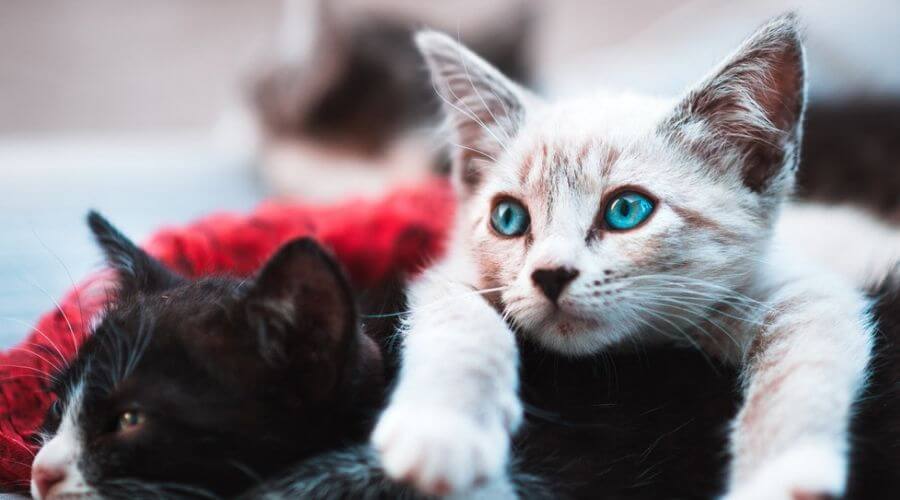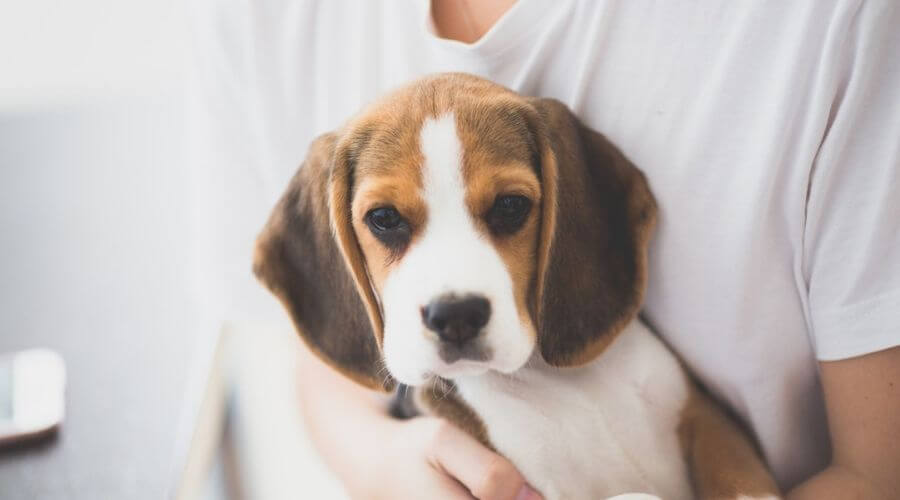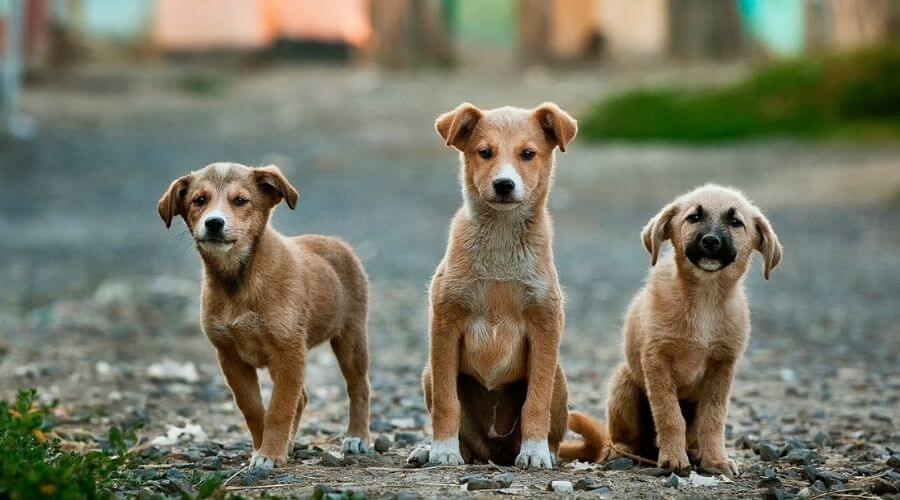From July 1, 2019, anyone wanting to sell or give away cats, kittens, dogs or puppies will need to add an identification number to the advertisement.
The identification number can be one of the following:
- a microchip number
- a breeder identification number, OR
- a rehoming organisation number
These new rules apply to ALL advertisements. This includes:
- Newspaper advertisements
- Local posters
- Ads displayed on community notice boards
- All forms of online advertising (including those of Gumtree and in the Trading Post)
- Ads posted to social media

Why is an identification number necessary?
This change has been implemented in response to the Parliamentary Inquiry into Companion Animal Breeding Practices. It is intended to help promote the responsible breeding of cats and dogs, identify unscrupulous breeders and help protect animal welfare.
In cases where the breeder identification number is listed, buyers will be able to access the breeder’s business name listed on the NSW Pet Registry. This will help buyers with their research and assist them in making informed decisions.
Having an identification number means potential buyers can look up details of the animal including:
- Sex
- Breed
- Age
They can also see if the animal has been desexed and whether it’s registered.
According the to an article on the Pet Industry Association (PIAA) website, these changes will also help enforcement agencies to uncover ‘problem’ breeders and enforce animal welfare laws.

Important points about the new law
The following important information is provided by the Department of Primary Industries.
- Whether the animal is being sold or re-homed, an identification number is required on the advertisement.
- Even if you don’t breed cats or dogs commercially, you still need an identification number to place an advertisement.
- Breeder identification numbers can be obtained free of charge from the NSW Pet Registry.
- A re-homing number can only be used be recognized re-homing organisations.
- Exemptions apply to working dogs that do not require a microchip under the Companion Animals Act. Also, the law does not apply to menacing, dangerous and restricted dogs, as it is illegal to sell or advertise these dogs in NSW.
From July 1, 2019, it will be an offence not to place an identification number on an advertisement or to use a false number.
On-the-spot fines of $330 apply if a person fails to include an identification number in their advertisement.
Furthermore, failure to include an identification number, or using a fake number carries a maximum penalty of $5,500 in court.
Upholding the law
As a pet professional, if you are handed an advertisement without an identification number, you should advise the person placing the ad about the new laws. You can also direct them to the information on the Department of Primary Industries website.
In other instances where an advertisement does not contain an identification number, or you suspect that it may be a false number, you are urged to contact an enforcement agency.
Prevention of Cruelty to Animals Act 1979 enforcement agencies include:
Note: If the advertisement relates to a greyhound owned by a greyhound-racing participant, the Greyhound Welfare and Integrity Commission should be contacted.
The information in this post only relates to NSW. If you do not live in NSW check with your local council what the rules may apply.
Latest posts by Liz Walden (see all)
- Pet health: Medicinal cannabis for pets - December 27, 2021
- What pet business insurance do I need? - November 17, 2021
- Pet sitters: how to take time off - November 15, 2021










What if there is no online advertisement for someone wanting to sell puppies? No posters or social media…just by word of mouth; would that person still need and an identification number?
There are a few grey areas, as most of the information is linked directly to advertising (no matter what method is used). I believe you would still need an Id number, as pets are required to be microchipped before 12 weeks of age or before sale (whichever comes first). As such, the microchip number should be your ID number. You can find more info and some common Q&As on the Department of Primary Industries website: https://www.dpi.nsw.gov.au/animals-and-livestock/animal-welfare/companion-animal-welfare/selling-or-giving-away-a-cat-or-dog
We found a pet grooming pet shop that was secretly selling puppies. Obviously they haven’t any certificate, they even haven’t got a microchip number, they are just reseller.
Further more , they lied to customers and said these puppies are Korean breeds, but we found out that the photos they provided are just stolen online
scamer shop address
367 Concord Rd, Concord West NSW 2138
they have sold hundreds of puppies in 4 years. But they just looks like a cat shop!
all of these puppies are bought from puppy farm and then sell in a secret way.
apparently they don’t pay the tax
after I told them I’ll report, they pay pack my deposit, you can see they admit that it’s puppy refund
Hello Lynn, this sounds very disturbing. Recommend that you report this to the RSPCA. Here is their contact page. Liz
https://www.rspca.org.au/contact-us
There are thousands of dogs for sale on gum tree. All have breeder numbers. I’m wondering how difficult this is to obtain considering there are so many “registered breeders” and there is so much money to be made at the mercy of these innocent animals. $5000 per dog, even those crossed with 3 breeds, which were mutts when I was a kid. One lady has 3 litters going at once. Her male poodle bred with 3 different female dogs, all born a few days apart, totalling approx $94,000 in sales from these pups. It makes me sick. I got penalised for accidentally adding travel home from TAFE from work on my tax return and I wonder if these breeders pay tax!! I think all breeders should. It’s too easy to become a breeder and exploit innocent animals. And most are not negotiable on price. I’d rather use $4000 to put away for the care of a pup than line a breeders pocket. I understand there are some serious breeders not having several litters at a time, or each year but I can guarantee most are exploiting animals and people for money. Just like drug dealers. Well that is how I feel right now anyway.
Hi Amanda, yes we agree that it is terrible that there are many who are exploiting animals. If you suspect someone of running a puppy farm I would suggest you report them to the RSPCA.
Hi I just sold 3 of my pups (pom x) to what seemed a loving home with 2 children who wanted 1 pup each and the third puppy was to go to her sisters. I was very upset to find out the next morning, from another potential purchaser that they were readvertised for sale at a much higher price ( I advertised each pup for $400 as a pomeranian cross and the new purchaser is reselling them for $3500 each as pomeranian, not mentioning that they are a cross breed). This really infuriated me as I did not care about the money, I simply wanted a loving home for them and it made me happy to know that they would grow up together which will obviously not be the case now. Ideally I want the pups back and rehome them to an honest and loving new owner for the same amount that I advertised them for but I’m not sure if thats possible as I’ve called the police already and they said there’s not much I can do. Has anyone experienced this before and is there anything I can do? I am not a breeder, simply an owner of the pups parents. Pups are microchipped and vaccinated
Yes my bane as well. TAX!!! Are these so called breeders paying tax on selling these pups for such a high ludicrous price. Some of these people earn more in selling a litter of pups than someone may earn in a year and definitely in some cases ($6000 per pup@6pups, do the math) Higher than a pensioner earns. Yes and most of these people do not budge on price when they are overpriced in the first place. Its not only pups its cats and other animals as well. I have a girlfriend that breeds and she constantly talks about how much money she is going to get for each litter. Sickens me using poor female dogs womb to earn a living mumma animal didn’t ask for it, what about the rights of the animals am sure if they had a choice they wouldn’t give their permission. The prices have got out of hand and I point the finger at the breeders if their prices weren’t so high it would discourage the backyard breeders that only see the dollar. So come on breeders you too take your greedy eyes off the money and come back into the real world and help the little mumma animals out